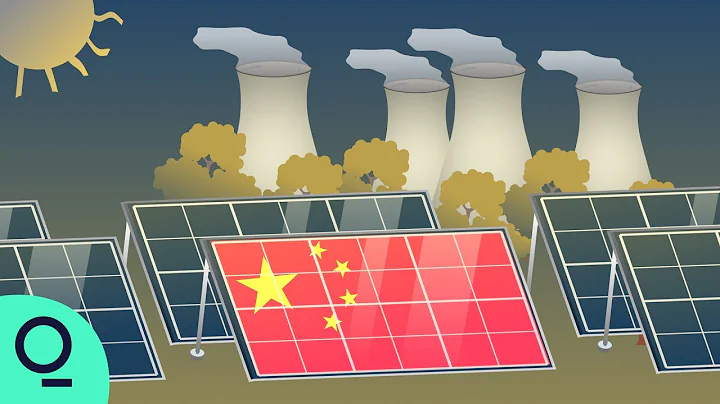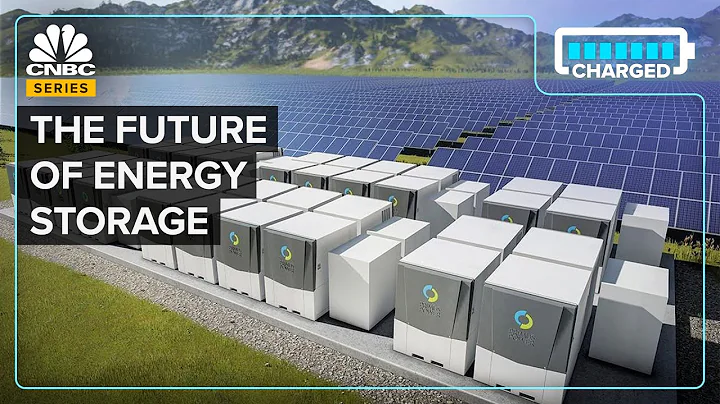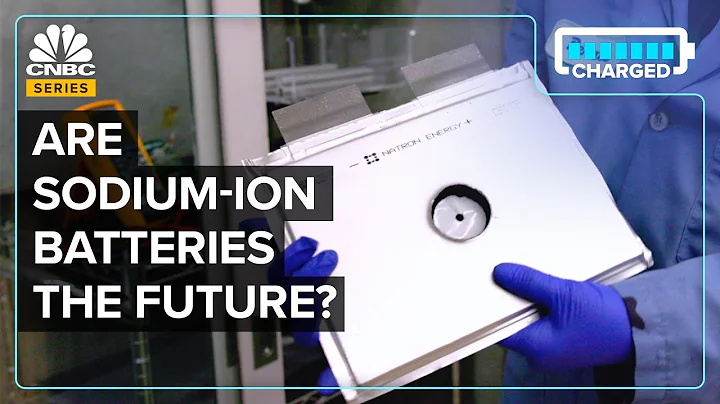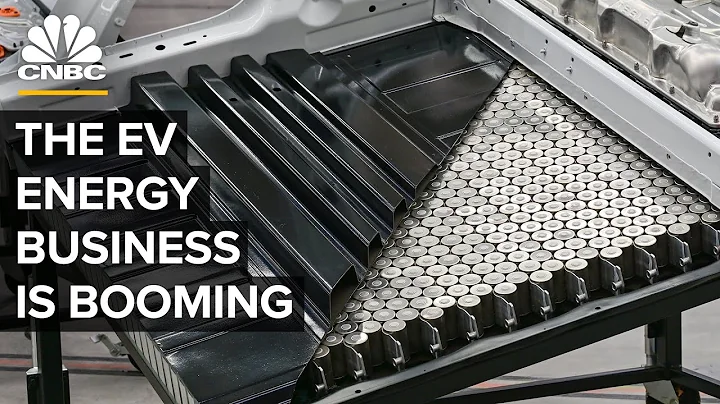[Energy people are watching, click on the upper right corner to add 'Follow']
![[Energy people are watching, click on the upper right corner to add 'Follow'] On April 26, the](https://cdn-dd.lujuba.top/img/loading.gif) html On April 26, the "2022 Global Energy Storage Industry Development Review and Prospects Seminar" was held grandly. At the meeting, the Energy Storage Special Committee of the China Energy Research Association, Zhongguancun Energy Storage Industry Technology Alliance released the "Energy Storage Industry Research White Paper 2022". The conference also received strong support from government agencies, scientific research institutes and universities such as the National Energy Administration, China Energy Research Association, Institute of Physics, Chinese Academy of Sciences, and Tsinghua University.
html On April 26, the "2022 Global Energy Storage Industry Development Review and Prospects Seminar" was held grandly. At the meeting, the Energy Storage Special Committee of the China Energy Research Association, Zhongguancun Energy Storage Industry Technology Alliance released the "Energy Storage Industry Research White Paper 2022". The conference also received strong support from government agencies, scientific research institutes and universities such as the National Energy Administration, China Energy Research Association, Institute of Physics, Chinese Academy of Sciences, and Tsinghua University. Energy storage has ushered in a critical moment of development. It can be said that challenges and opportunities coexist. Data from the "Energy Storage Industry Research White Paper 2022" shows that the scale of new energy storage projects planned and under construction in my country in 2021 is 23.8GW/47.8GWh, and the new scale of new energy storage has exceeded 2GW for the first time, reaching 2.4GW/4.9GWh, a year-on-year increase of 54% ; Among new energy storage, both lithium-ion batteries and compressed air have hundreds of megawatt projects connected to the grid. The latter, in particular, has achieved leapfrog growth in 2021, with an additional operational scale of 170MW, approaching the cumulative installed capacity by the end of 2020. 15 times.
In subsequent reports, Du Xiangwan, academician of the Chinese Academy of Engineering, Feng Kai, deputy chief engineer and director of the Development Planning Department of State Grid Corporation of China, Zhong Haiwang, associate professor of the Department of Electrical Engineering of Tsinghua University, Li Hong, researcher of the Institute of Physics, Chinese Academy of Sciences, and deputy secretary of the Zhongguancun Energy Storage Industry Technology Alliance Yue Fen, chief executive and research director, elaborated on it from the perspectives of energy development, business models, and technical routes.
The new energy + energy storage market will reach the level of 100 billion
Du Xiangwan, an academician of the Chinese Academy of Engineering, analyzed the important role of energy storage in realizing energy security, reliability, economic feasibility, green and low-carbon development from an energy perspective. Academician Du believes that commercialized energy storage (thermal) technology is a key node for future energy systems to have flexibility, inclusiveness and balance functions. It is also mentioned that hydrogen energy storage can improve the absorption capacity of wind and light, and can cope with long-term intermittency, converting fluctuating wind and solar energy into hydrogen energy, which is beneficial to energy storage and transmission.
Regarding cost, Academician Du said that technological progress will further reduce the cost of energy storage and hydrogen energy. The cost of electrochemical energy storage has exceeded the economic turning point. In the next five years, the cost can be reduced by another third. In the next ten years, there will be The cost may be reduced by another 66% to 80%. The cost of saving electricity brought by energy storage will offset the cost of energy storage equipment and will become a new growth point in the energy economy. It is estimated that by 2025, the new energy + energy storage market will reach hundreds of billions.
The installed capacity of new energy storage in the State Grid region has exceeded 4.53 million kilowatts
Feng Kai, deputy chief engineer and director of the development planning department of State Grid Co., Ltd., introduced the supporting role of new energy storage in new power systems. Under the carbon peak scenario, there is a large gap in system adjustment capabilities, which is insufficient to support the efficient utilization of a high proportion of new energy and the replacement of a high proportion of electricity. Calculated based on the new energy utilization rate of 95%, excluding the flexibility transformation of new coal power and new storage With the capacity and demand side response resources, the peak shaving gap in the company's operating area in 2025 will be about 80 million kilowatts, and the peak shaving gap in 2030 will be about 160 million kilowatts. Without the support of adjustable resources such as new energy storage of corresponding scale, new energy will be generated. Energy utilization has dropped significantly. In order to cope with the above challenges, we believe that energy storage is an important means to ensure stable power supply, increase system security margin, and improve the utilization rate of new energy. It is an important technology and basic equipment for building a new power system, and is an important means to achieve carbon peak and carbon neutrality. and important support for goals. The company will vigorously promote the construction of pumped storage power stations, actively support the large-scale application of new energy storage, and strive to have both pumped storage and new energy storage installed capacity exceed 100 million kilowatts in the company's operating areas by 2030.
In the medium to long term, with technological advancement and cost reduction, new energy storage will become an important force in power system regulation. As of the end of 2021, the installed capacity of new energy storage in the company's operating areas has exceeded 4.53 million kilowatts, accounting for more than 82% of the country's total.
New business models may emerge
The current development of energy storage mainly relies on policy incentives, and long-term and healthy development of energy storage requires marketization, in which the design of the business model is crucial. Zhong Haiwang, associate professor of the Department of Electrical Engineering at Tsinghua University, believes that in order for energy storage to better utilize its benefits, energy storage should be allowed to participate in different power markets and provide different services.In addition, for grid-side energy storage, it is recommended that energy storage that accepts unified dispatch and plays a global and systemic role should be included in the category of grid-side energy storage. This will help form an open and competitive grid-side energy storage market, and can also Relying on the power dispatching organization to build a large-scale energy storage system cluster intelligent dispatch control platform, it is convenient for large-scale systems to participate in the market.
Zhong Haiwang also proposed a time-sharing business model, which means that an energy storage power station can provide peak shaving in different time periods and frequency regulation in other time periods. This can increase the income of the energy storage power station and maximize benefits. change.
Solid-state batteries and sodium-ion batteries will be competitive in the future.
Li Hong, a researcher at the Institute of Physics, Chinese Academy of Sciences, said that under the background that all-solid-state batteries cannot be industrialized quickly, the hybrid solid-liquid electrolyte battery proposed by the Chinese Academy of Sciences is expected to play an important role in the safety of solid-state batteries. It has advantages in sex, is easy to engineer, and has good development prospects. In addition, sodium-ion batteries have high charge and discharge rates, high temperature stability, and no resource dependence, and are expected to be very competitive in the future frequency regulation market, peak regulation market, and large-scale distributed energy storage.
Talking about the development goals of energy storage technology in the "14th Five-Year Plan", Li Hong emphasized that in general, a strategic layout of short-term high-frequency technology, medium- and long-term energy storage technology, and ultra-long-term energy storage technology will be formed, including different Application scenarios and different technical requirements, covering from MWh to GWh, while supporting a series of advanced technologies, including characterization analysis, detection, security and advanced manufacturing. It is hoped that the cost of electricity will be reduced to less than 2 cents, the service life of energy storage will be increased to 20 years, the cycle times will be increased to more than 15,000 times, and the security of energy storage will be developed from relatively safe to intrinsically safe, among which intelligence is particularly important. It was also mentioned that long-term energy storage technology of more than 8 to 10 hours is the biggest challenge in the energy storage field.
The cumulative scale of new energy storage will reach 48.5GW in 2026
Yue Fen, deputy secretary-general/research director of the Zhongguancun Energy Storage Industry Technology Alliance, gave a comprehensive summary of the energy storage market in 2021. In terms of the scale of the new energy storage market, 10GW will be newly put into operation globally in 2021, with a total of 25GW. Among them, 2.4GW/4.9GWh of new energy storage will be newly put into operation in China, with a total of 5.73GW. Judging from the distribution of new domestic energy storage applications, the power supply side accounts for 41%, the grid side 35%, and the user side 24%. Judging from the situation of new energy storage planning and construction projects, starting from 2021, China's energy storage market has entered a truly large-scale development: Among the 865 energy storage projects planned, under construction, and put into operation in 2021, a total of 26.3GW. There are only 7 100-megawatt projects in operation, but more than 70 100-megawatt projects are planned and under construction; most of the 100-megawatt projects are in the form of independent energy storage/shared energy storage, and their size is capable of playing a system-level role in the power grid. foundation and conditions; in addition, more technical routes are also heading towards the application of 100 MW, including the first 100 MW compressed air energy storage project connected to the grid for commissioning and operation, and the 100 MW flow battery project is under construction.
Yue Fen also conducted a comparative analysis of global energy storage business models. In terms of revenue sources, internationally, it is more common to first provide energy storage with a guaranteed income through a 10- or 15-year capacity agreement, and then add the income from auxiliary services. and spot market returns. Compared with international ones, domestic ones are currently more of a planned approach, such as giving away some new energy indicators or rewarding independent energy storage with priority power generation or guaranteeing the number of mobilization hours, etc. In the future, independent energy storage may continue to advance as the spot market and ancillary service market open up more markets for energy storage. At the same time, consideration may be given to setting capacity electricity prices to ensure a minimum return for energy storage.
Encouraged by innovative business models and policies, Yue Fen believes that domestic new energy storage will still maintain rapid growth in the next five years. Under a conservative scenario, it is expected that new energy storage installed capacity will reach 48.5GW in 2026, with a compound annual growth rate Reaching 53%, in an ideal scenario, the total installed capacity will reach 79.5GW, and the compound growth rate will reach 69%.
While the installed capacity is growing rapidly, the high-quality development of new energy storage still faces major challenges. Liu Yafang, deputy director of the Energy Conservation and Technology Equipment Department of the National Energy Administration, said that first, the new energy storage management system and mechanism are not yet complete, and industry management needs to be strengthened urgently.Second, the cost guidance mechanism for new energy storage projects covers a wide range of areas and is difficult to implement. Third, the safety management of new energy storage projects needs to be strengthened urgently, and relevant standards and production procedures need to be further improved and revised. Fourth, new energy storage planning and layout are not coordinated with dispatching operations, and the overall utilization rate is relatively low.
Chen Haisheng, director of the Energy Storage Special Committee of the China Energy Research Association and chairman of the Zhongguancun Energy Storage Industry Technology Alliance, said that judging from the projects built in 2021, a stable and reasonable price mechanism has not yet reached a consensus, and the implementation details of price compensation have not yet been formed. The phenomenon of idle energy storage grid-connected projects still exists.
Despite this, the development of new energy storage has not stopped the pace of innovation. The Zhongguancun Energy Storage Industry Technology Alliance will continue to play its role in policy promotion, industrial research, market activities, and standard formulation, making new contributions to bringing greater value to new energy storage and supporting the transformation of the energy structure.
Disclaimer: The above content is reproduced from TrendForce New Energy Network, and the content posted does not represent the position of this platform.
National Energy Information Platform contact number: 010-65367702, email: [email protected], address: People's Daily, No. 2 Jintai West Road, Chaoyang District, Beijing





















